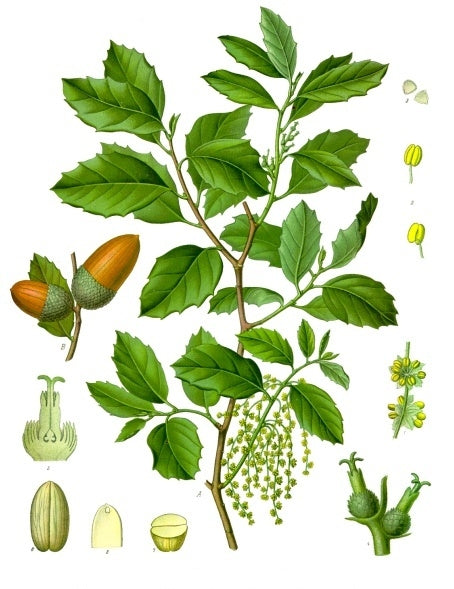
Quercus Suber - The Cork
In the last blog, we talked about oak and the shared history between wine and oak. Today, we'll continue with the topic of trees and wine, but I want to discuss another type of oak and its long and important relationship with wine: Quercus Suber - or simply: cork. Cork and the wine industry have deep roots, stretching back several centuries. This natural material, obtained from the bark of the cork tree, has played a fundamental role in the preservation and evolution of wines. Its systematic use to seal bottles began in the 17th century, when the design of glass bottles evolved towards more uniform and practical shapes. It was then that cork proved to be an indispensable ally, as it offered a flexible, airtight seal, capable of preserving wine for long periods. Cork allows very little air to enter the bottle, guaranteeing an effective seal that prevents excessive oxygen from passing through, which can oxidize the wine. During this preservation period, the wine can “breathe” in the bottle with the low amount of oxygen that enters. If that weren't enough, cork itself is an amazing material - it's soft and flexible, it can be bent without breaking, it's impermeable to water, it's lightweight, and it can mold itself to the shape of the bottle's neck so that no liquid gets in or out. Really, cork is something that has long been indispensable to wine, and while there are other options for sealing the bottle, which we'll talk about later, Cork trees and the grapevine make an inseparable pair.
This amazing tree, which takes 25-30 years to produce its first crop, comes from south-western Europe, in Portugal and Spain. Portugal is the number one producer - producing the majority of high-quality cork and almost 60% of all cork worldwide. The tree grows easily in its stony soils, and also in North Africa in Tunisia, Algeria, Morocco and a small percentage in Sardinia and Italy. While most trees die if their bark is harvested, Quercus Suber can live for another 200 years by renewing its bark every nine to twelve years.

Source: https://www.ajoto.com/blogs
After the bark is harvested, it is stored for six months to stabilize its moisture. It is then boiled to remove organic matter that can remain in the pores of the bark and to reach the correct hydration to allow it to be processed and cut into its distinctive cork shape. It is a process that does not harm the tree, it is a natural and 100% renewable resource and any part that is not used for corks is processed for flooring, insulation, shoes and other cork products.
Despite the emergence of alternatives such as synthetic stoppers and screw caps, cork remains the preferred choice in the production of high-end wines. Cork allows for controlled micro-oxygenation, a crucial process for the aging of certain wines. This subtle exchange of oxygen favors the evolution of more complex aromas and flavors, enhancing the quality of the final product.
However, the cork industry faces significant challenges. One of the main ones is the risk of TCA (trichloranisole) contamination, a substance that can cause the dreaded “cork taste, moldy or wet dog odors” in wine. It comes from the way they used to clean the cork – using chlorine to disinfect it. The method is hardly used anymore, but municipal water uses chlorine as a disinfectant and can be contaminated in the winery, multiplying the problem when it infects pumps, tanks and hoses, giving TCA notes in some wines that don't even have real corks. Although technological advances have allowed the development of treatment processes that significantly reduce this problem, it remains a critical issue for producers.

https://arrowheadwine.blogspot.com/2011/06/wine-stoppers-part-three-alternatives.html
Competition from alternative materials has also forced the industry to reinvent itself. There are several types of options - synthetic stoppers, screw caps, and in Germany and Austria glass corks are popular. They all offer advantages such as lower costs and the eliminating the risk of TCA. Some say that the amount of air that always exists between the wine and the cork is sufficient to oxygenate the wine in the bottle especially for bottles that are consumed within the first few years. But for wines that one wants to leave in the cellar for many years, alternative corks, and the low amount of air, cannot match the unique combination of functionality and tradition that natural cork offers.
The future of cork in the wine industry depends largely on its ability to adapt to a constantly changing market. Innovation in cork processing and promoting its environmental benefits are key strategies to maintain its relevance. At the same time, the demand for sustainable products and the preference for authentic, quality experiences continue to favor its use in premium wines.
Cork remains a fundamental pillar in the wine industry, combining tradition, functionality and sustainability. Although it faces challenges, its role as a guardian of wine endures, adapting to the demands of the modern market. In a world where sustainability and authenticity are increasingly valued, cork is reaffirmed as an irreplaceable symbol of quality and respect for nature.





